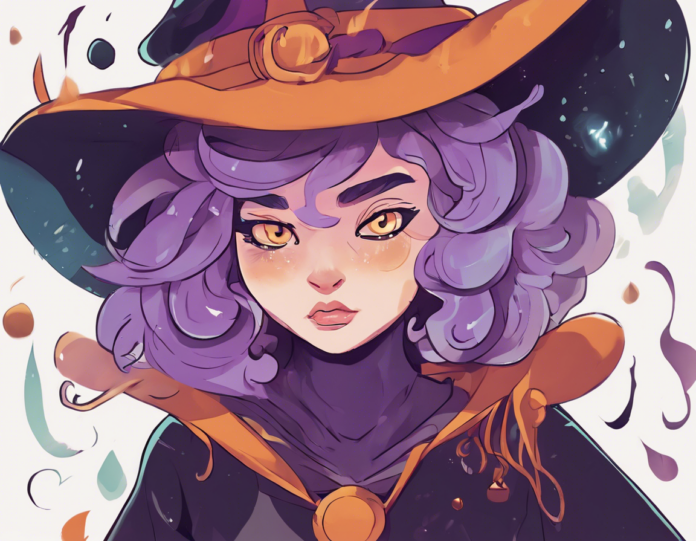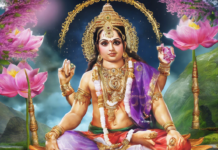Beneath the surface of the mundane lies a mystical realm where witchcraft and magic reign supreme. For centuries, witches have been associated with spells, potions, and broomsticks. However, this stereotypical image barely scratches the surface of the intricate and diverse world of modern witchcraft. In recent years, there has been a resurgence of interest in the occult, with more people exploring pagan and witchy practices.
A Brief History of Witchcraft
Witches have a long and complex history that dates back to ancient civilizations. In ancient times, witches were revered for their healing and divination abilities. However, with the rise of Christianity, witches began to be persecuted as agents of the devil. The most infamous witch hunts occurred during the 16th and 17th centuries, resulting in the torture and execution of thousands of innocent people, mostly women.
The Modern Witch
Fast forward to the present day, and witches have reclaimed their power, embracing a wide range of spiritual practices and beliefs. Modern witchcraft encompasses a diverse range of traditions, including Wicca, Hoodoo, Green Witchcraft, and Kitchen Witchery, among others. Wiccans follow the teachings of Gerald Gardner, who popularized modern witchcraft in the mid-20th century. Hoodoo is a blend of African, Native American, and European folk magic, while Green Witches focus on herbalism and nature. Kitchen Witches work magic through cooking and cuisine.
Tools of the Trade
Witches employ various tools and symbols in their practice to enhance their magic. Some of the most common tools include:
1. Athame: A ceremonial knife used to direct energy.
2. Wand: Used for casting circles and invoking spirits.
3. Cauldron: A symbol of transformation and rebirth.
4. Crystals: Used for healing, protection, and divination.
5. Tarot Cards: Used for divination and gaining insight into the future.
6. Herbs: Used in spells, potions, and rituals.
The Power of Ritual
Rituals are an essential part of witchcraft, helping to focus intentions and energy. A ritual can be as simple as lighting a candle and saying a prayer, or as elaborate as a full moon ceremony with chanting and dancing. Sabbats and Esbat are Wiccan rituals that celebrate the cycles of the sun and moon, while spell casting rituals are used to manifest intention.
Ethics and Morality
Contrary to popular belief, witches do not engage in black magic or harm others. Most witches adhere to the Wiccan Rede, which states, “An it harm none, do what ye will.” This principle emphasizes the importance of ethical behavior and responsibility in magic. Karma is another belief that many witches hold, believing that the energy they put out into the world will return to them threefold.
Common Misconceptions
Witchcraft is often misunderstood and misrepresented in popular culture. Some of the most common misconceptions include:
– Witches worship the devil: This is a myth perpetuated by Hollywood and Christian propaganda. Witches do not worship the devil.
– Witchcraft is evil: Witchcraft is a spiritual practice that can be used for both good and harmless purposes.
– Witches can fly on broomsticks: While the image of a witch flying on a broomstick is iconic, it is purely mythical.
– Witches are all women: Witchcraft is not limited by gender and is practiced by people of all genders and orientations.
FAQs
1. Can anyone become a witch?
Yes, anyone can become a witch if they have a sincere interest in witchcraft and magic. There are no formal qualifications required to practice witchcraft.
2. Do witches have special powers?
Witches do not have supernatural powers in the traditional sense. Their abilities come from practice, experience, and connection to the spiritual.
3. Is witchcraft a religion?
Witchcraft is a spiritual practice and not a religion. However, many witches incorporate religious elements into their practice, such as pagan beliefs.
4. How can I start practicing witchcraft?
To start practicing witchcraft, you can begin by researching different traditions and practices, meditating, casting circles, and setting intentions.
5. Are there online communities for witches?
Yes, there are many online communities and forums where witches can connect, share knowledge, and support each other in their practice.
6. Do I need to buy expensive tools to practice witchcraft?
No, you do not need expensive tools to practice witchcraft. Many witches use simple household items and natural materials in their practice.
7. Can witchcraft help with love and relationships?
Witchcraft can be used to enhance love and relationships by setting intentions, casting spells, and working with crystals and herbs associated with love.
8. Is witchcraft dangerous?
Witchcraft itself is not dangerous, but like any practice, it should be approached with respect and caution. Ethics and responsibility are paramount in witchcraft.
9. What are some common rituals in witchcraft?
Common rituals in witchcraft include casting circles, calling the quarters, invoking deities, working with elements, and ritual bathing.
10. Can anyone learn witchcraft, regardless of their religious beliefs?
Absolutely, anyone can learn witchcraft regardless of their religious beliefs. Witchcraft is a personal practice that can be tailored to individual beliefs and spirituality.
In Closing
Witchcraft is a rich and diverse spiritual practice that empowers individuals to connect with nature, spirit, and intuition. Whether you’re drawn to herbalism, divination, ritual magic, or tarot, there is a place for you in the magical world of witchcraft. Embrace your inner witch and explore the mysteries that lie beyond the veil.









